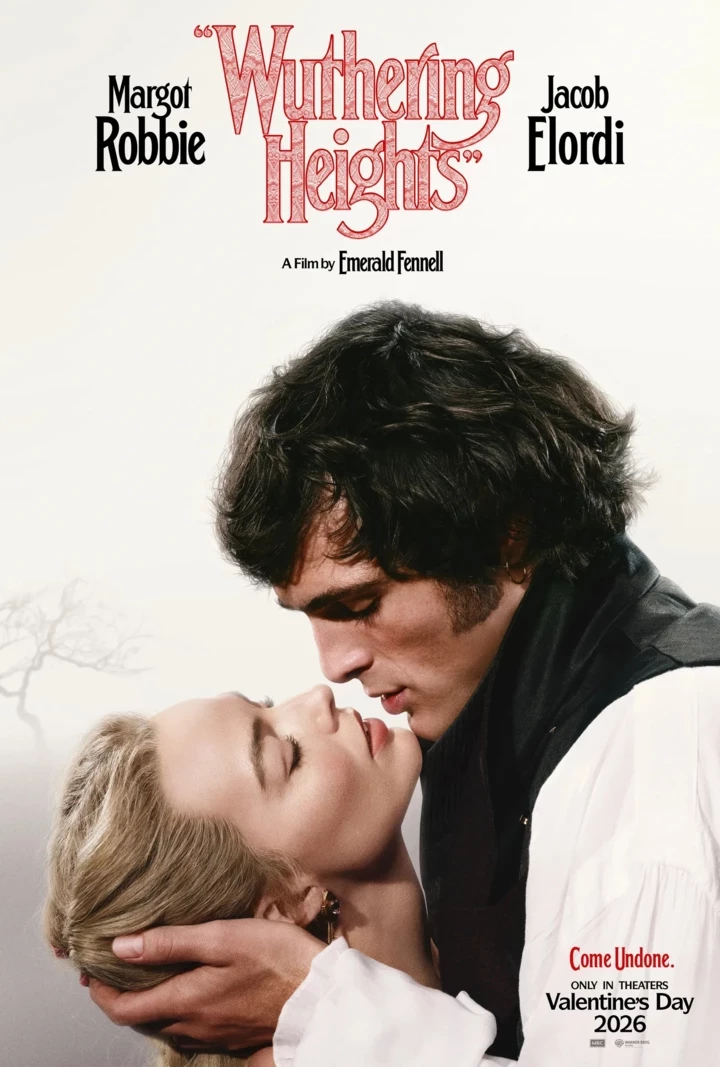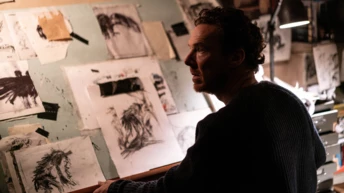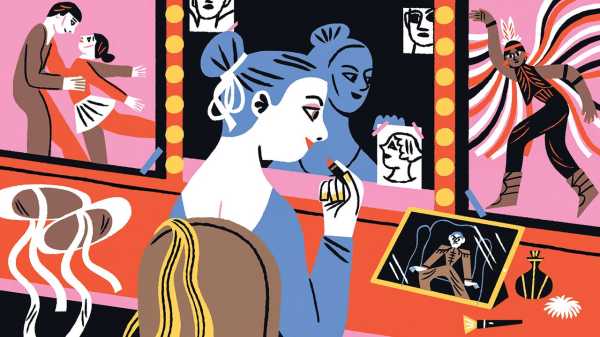
Save this storySave this storySave this storySave this story

You’re reading the Goings On newsletter, a guide to what we’re watching, listening to, and doing. Sign up to receive it in your in-box.
As you catch those last golden rays of summer, here’s something to look forward to: fall culture. Great art (and even not so great art) can soothe and buoy even the most beleaguered souls. Here’s hoping this season is no exception—our critics have gathered the most exciting cultural happenings in our fall preview. Several new TV shows take on the fight for truth in media—I’m especially excited about the “Office”-esque comedy “The Paper” and the new season of, I can’t help it, “The Morning Show”—and Vince Gilligan (“Breaking Bad”) is back with a new sci-fi project set in Albuquerque. In movies, I can’t wait to see Rose Byrne at the end of her rope in Mary Bronstein’s “If I Had Legs I’d Kick You,” and Richard Linklater’s take on Godard. In music, I’m eager to experience Park Avenue Armory’s sound storm of “11,000 Strings,” and indie rock is clearly having a moment (Mac DeMarco, Big Thief, Jeff Tweedy, the list goes on); Fall for Dance renews a love of all that the form can offer, and the city’s top ballet companies, New York City Ballet and American Theatre Ballet, both treat us to full seasons. The art world is having a feminist surge, if the shows of Ruth Asawa, June Leaf, and Vaginal Davis are any indication; Broadway gets Keanu Reeves waiting for Godot, Kristin Chenoweth reigning in “The Queen of Versailles,” and a transfer of Bess Wohl’s lovely, lived-in “Liberation.” Don’t miss it.
New Yorker subscribers enjoy access to our full seasonal cultural previews directly in their inbox. Thank you for your support.—Shauna Lyon
Jump to: Television | Movies | Classical Music | Contemporary Music | Dance | Art | The Theatre
Television

Illustrations by Gosia HerbaThe Fourth Estate, Amateur Sleuths
It’s been a brutal year for journalism, with mass layoffs, corporate capitulation, and distrust of traditional media eroding the industry. One of the fall’s most anticipated shows, “The Paper” (Sept. 4), on Peacock, hopes to turn this decline into comedic fodder. The new sitcom, a spinoff of “The Office,” chronicles an editor-in-chief’s efforts to turn around an Ohio newspaper with volunteer reporters.
Elsewhere, the romance of the fourth estate is alive and kicking. FX’s “The Lowdown” (Sept. 23), Sterlin Harjo’s noir follow-up to his acclaimed “Reservation Dogs,” stars Ethan Hawke as a citizen journalist and a self-styled “truthstorian” in Tulsa whose exposé of a powerful local family leads to a suspicious death. (Hawke’s character is inspired in part by Lee Roy Chapman, an autodidact whose work sparked a major reconsideration of one of the city’s founding fathers.) Led by an equally determined protagonist is Netflix’s movie “The Woman in Cabin 10” (Oct. 10), in which a travel writer (Keira Knightley) on assignment aboard a luxury yacht sees a passenger being thrown off the ship and decides to investigate. Back on land, the TV anchors of Apple TV+’s “The Morning Show” (Sept. 17) return for a fourth season. Despite—or because of—the drama’s so-bad-it’s-good track record with ripped-from-the-headlines stories, it revisits that questionable well, with this year’s installments bringing up issues of the media’s credibility in an era of fake news and political polarization.
The pursuit of truth and justice continues outside of journalistic circles, too. In the adaptation of Mick Herron’s book “Down Cemetery Road” (Apple TV+; Oct. 29), the disappearance of a girl in a peaceful English suburb results in a woman’s obsession with the case. The streaming service also débuts “The Savant” (Sept. 26), a thriller in which a housewife (Jessica Chastain) infiltrates internet hate groups to deter mass shootings. The show is based on real life, as is the Netflix drama “Wayward” (Sept. 25), which is set at a facility for “troubled” teens, created by the comic Mae Martin, who was inspired by the stories of her childhood best friend. One suspects that much of the camp’s darkness will stem from the show’s creepy counsellor, played by Toni Collette.
If all this sleuthing motivates you to do some snooping of your own, there’s currently plenty to find out about “Pluribus” (Nov. 7), Vince Gilligan’s first major TV series since “Breaking Bad” and “Better Call Saul.” The Apple TV+ project, which features Rhea Seehorn, who earned two Emmy nominations for her exquisite performance in “Better Call Saul,” can be described as “mild science fiction,” according to Gilligan. Publicity materials thus far tease that the show will involve doughnuts, Albuquerque, and “the most miserable person on Earth” saving “the world from happiness.” Consider our curiosity whetted.—Inkoo Kang
Movies

Kogonada, J. Law, the Rock, Godard
Romance will be big in the coming season, as in Kogonada’s third feature, “A Big Bold Beautiful Journey” (opening Sept. 19), starring Margot Robbie and Colin Farrell as strangers who magically get to relive moments from their past. In “Splitsville” (Aug. 22), directed by Michael Angelo Covino, a divorcing couple (Kyle Marvin, who co-wrote the script with Covino, and Adria Arjona) is thrown into turmoil by friends with an open marriage (Dakota Johnson and Covino). The mumblecore pioneer Jay Duplass directed “The Baltimorons” (Sept. 5), about a thirtysomething man (Michael Strassner) who breaks a tooth on Christmas Eve and forges a sudden relationship with an older emergency dentist (Liz Larsen). “The History of Sound” (Sept. 12), set in the nineteen-tens and twenties, stars Paul Mescal and Josh O’Connor as ethnomusicologists whose relationship develops in their travels to discover and record folk music.
The season’s bio-pics involve an unusual range of subjects, starting with the M.M.A. fighter Mark Kerr, played by Dwayne Johnson, in “The Smashing Machine” (Oct. 3), the first feature directed solo by Benny Safdie. The prolific Richard Linklater has two artist-centered dramas: “Blue Moon” (Oct. 17), set amid the Broadway début of “Oklahoma!,” in 1943, about the lyricist Lorenz Hart (Ethan Hawke) and his professional breakup with the composer Richard Rodgers (Andrew Scott); and “Nouvelle Vague” (Oct. 31), the story of the 1959 shoot, in France, of “Breathless,” by Jean-Luc Godard (Guillaume Marbeck), with Zoey Deutch playing Jean Seberg. “Roofman” (Oct. 10) stars Channing Tatum as Jeffrey Manchester, a former Army Reserve officer whose nickname of the title refers to his method of breaking into McDonald’s restaurants; Derek Cianfrance directed. In Scott Cooper’s “Springsteen: Deliver Me from Nowhere” (Oct. 24), Jeremy Allen White portrays the singer-songwriter during the making of the 1982 album “Nebraska.” Ira Sachs directed “Peter Hujar’s Day” (Nov. 7), an adaptation of a book by Linda Rosenkrantz (played by Rebecca Hall), in which the author documents twenty-four hours, in 1974, in the life of the photographer (Ben Whishaw).
Crime pays cinematically in Darren Aronofsky’s new drama, “Caught Stealing” (Aug. 29), about a former baseball player (Austin Butler) who, in the nineties, gets drawn into a web of danger while cat-sitting; Bad Bunny and Zoë Kravitz co-star. Paul Thomas Anderson’s drama “One Battle After Another” (Sept. 26), about ex-revolutionaries who unite to rescue a kidnapped child, stars Leonardo DiCaprio, Benicio Del Toro, Teyana Taylor, and Sean Penn. “It Was Just an Accident” (Oct. 15), by the Iranian director Jafar Panahi, is a drama about a former political prisoner who kidnaps a man who he believes had tortured him. Emma Stone teams up again with the director Yorgos Lanthimos in “Bugonia” (Oct. 24), as an executive who is kidnapped by conspiracy theorists (Jesse Plemons and Aidan Delbis). And Kelly Reichardt returns with “The Mastermind” (Oct. 17), set in Massachusetts in the seventies, about an art-school dropout (Josh O’Connor) who becomes an art thief.
Family stories get a varied workout this fall, as in Mary Bronstein’s “If I Had Legs I’d Kick You” (Oct. 10), starring Rose Byrne as a therapist whose life is rendered chaotic by her young daughter’s chronic illness; Conan O’Brien and A$AP Rocky co-star. Nia DaCosta wrote and directed “Hedda” (Oct. 22), an adaptation of Ibsen’s “Hedda Gabler,” starring Tessa Thompson. Lynne Ramsay’s “Die My Love” (Nov. 7) stars Jennifer Lawrence as a woman who struggles with postpartum depression. In Joachim Trier’s “Sentimental Value” (Nov. 7), set in Oslo, Renate Reinsve plays a woman whose estranged father (Stellan Skarsgård), a director, offers her a role in his new film. Noah Baumbach’s drama “Jay Kelly” (Nov. 14) is about an actor (George Clooney) on an emotional road trip with his manager (Adam Sandler).—Richard Brody
Classical Music
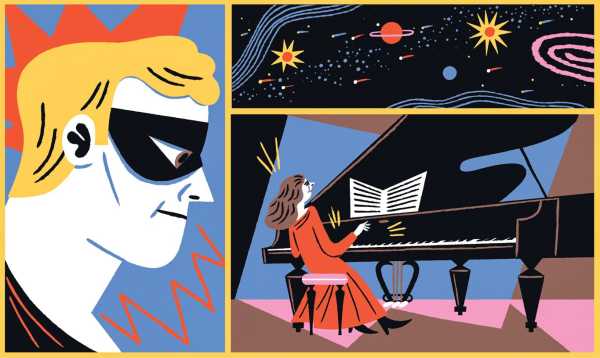
Celestial Opera, Angela Hewitt’s Bach
What defines an opera if not the singing? While the composer Robert Ashley’s characters often do more speaking than singing, his pieces aim to tell “a long story based on musical forms.” Close enough. His electronic chamber opera “Celestial Excursions,” which traces the thoughts and speech patterns of old people, is at Roulette (Sept. 12-14). For bel-canto devotees, Donizetti’s “La Fille du Régiment” (opening Oct. 17) brings coloratura fireworks to the Metropolitan Opera, which kicks off its season with “The Amazing Adventures of Kavalier & Clay,” adapted by Mason Bates and Gene Scheer from Michael Chabon’s novel (opening Sept. 21). Jeanine Tesori’s “Blue,” about a Black family victimized by a police shooting, is presented at the Wu Tsai Theatre (Nov. 15).
Few have captured infatuation like Schubert, three of whose lovelorn song cycles—“Die Schöne Müllerin,” “Winterreise,” and “Schwanengesang”—are performed in a single day, by the Brooklyn Art Song Society (Roulette; Oct. 12). The baritone Matthias Goerne brings the first to Carnegie Hall, on Oct. 19, with Daniil Trifonov at the piano. If Schubert plumbs the depths of solipsism, the Estonian composer Arvo Pärt travels the voids between the stars. The Estonian Festival Orchestra (Oct. 23) and Estonian Philharmonic Chamber Choir (Oct. 23-24) bring two all-Pärt programs to Carnegie, including “Tabula Rasa,” a work of sumptuous austerity.
The New York Philharmonic, led for each program by a different conductor, presents a century-spanning trio of modern violin concerti: Leila Josefowicz plays Karol Szymanowski’s second violin concerto (Sept. 27, 30), Joshua Bell plays Thomas de Hartmann’s (Nov. 6-8), and Nicola Benedetti plays Wynton Marsalis’s swooning, high-kicking concerto, her recording of which won a Grammy (Nov. 13-16).
At the 92nd St. Y, it’s Bach season: Chris Thile performs sonatas and partitas on the mandolin (Oct. 19), and Angela Hewitt, a legendary Bach interpreter, plays the Goldberg Variations (Oct. 24). The alchemical guitarist Sean Shibe performs Bach’s Cello Suite No. 1 on classical guitar, before switching to electric for pieces by Steve Reich and Tyshawn Sorey (Nov. 7). Sorey’s work also features in three programs by the percussion group Yarn/Wire (Miller Theatre; Oct. 27-29). Wu Man, a Chinese-pipa virtuoso, performs, with the Knights, the concerto that was written for her by Lou Harrison (Metropolitan Museum; Sept. 9). And, at the Park Avenue Armory, fifty “microtonally attuned” pianos, plus a chamber orchestra, buzz and heave in Georg Friedrich Haas’s monumental “11,000 Strings” (Sept. 30-Oct. 7).—Fergus McIntosh
Contemporary Music
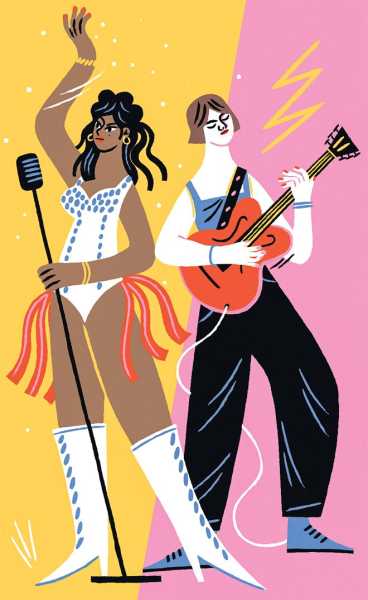
Kali Uchis, Big Thief, Laufey
The fall slate of concerts is highlighted by defining figures of indie rock’s past half decade. At Radio City Music Hall, Mac DeMarco channels a stunning new LP, “Guitar” (Sept. 8), and a month later Alex G is joined by Nilüfer Yanya, scaling up his operation after a major-label début (Oct. 8). At Kings Theatre, MJ Lenderman performs one of the best albums of 2024, “Manning Fireworks” (Oct. 16). In the midst of a shakeup to its lineup, the now three-person folk-rock group Big Thief reaffirms its standing as one of the most dynamic and in-synch units in all of music (Forest Hills Stadium; Oct. 25).
As the season sets in, many of the best shows make their way to Brooklyn. At Brooklyn Steel: the avant-pop icons Stereolab (Oct. 1-2), the Wilco front man Jeff Tweedy (Oct. 22), the electronic duo Autechre (Oct. 25), and the alt-rock band Wednesday (Nov. 11-12). At Brooklyn Paramount: the funk bassist Thundercat (Oct. 25) and one of U.K. hip-hop’s generational lyricists, Little Simz (Oct. 30-31). Other acts run to fill the open space of Under the K Bridge Park. On Sept. 13, TV on the Radio hosts “There Goes the Neighborhood,” a homecoming celebration, featuring sets from Flying Lotus, Sudan Archives, Moor Mother, and SPELLLING; and on Sept. 27 the rock luminaries Iggy Pop, Jack White, and the Sex Pistols headline CBGB Festival. A week later, the Swedish experimentalist Bladee sets forth his mood board for a genreless music of the internet, alongside the rappers Nettspend and Black Kray and the indie-rock band Bôa (Oct. 3). On the groovier end of the spectrum, at Barclays Center, the electro-R. & B. producer and d.j. Kaytranada co-headlines two shows with the French house duo Justice, on Nov. 8-9.
For those tracking the ever-expanding definition of pop, upstarts arrive from all over with diverse visions. From TikTok, there’s Addison Rae, who traffics in trip-hop and iPod nostalgia (Brooklyn Paramount; Oct. 1, and Terminal 5; Oct. 3). From France, there’s Oklou, a different kind of Y2K fusionist, whose sound evokes bedroom pop instead of Britney Spears (Knockdown Center; Oct. 17). As K-pop revs up its global expansion, one of the sleepers is the bubbly girl group STAYC, whose songs possess a fun-house exuberance (The Theatre at M.S.G.; Oct. 21). The London singer Lola Young, fresh off the breakaway triumph of her sparingly scuzzy single, “Messy,” cheekily embraces newfound notoriety in support of her upcoming album, “I’m Only F**king Myself” (Terminal 5; Nov. 5-6).
But M.S.G. is home to stars across genres. On Sept. 8, the Haim sisters unlock the vivid songs of their June release, “I Quit,” and the Latin-soul iconoclast Kali Uchis follows suit, for May’s “Sincerely” (Sept. 11-12). The alt-pop savant Lorde débuts her new album, “Virgin” (Oct. 1), while Lainey Wilson, an irreverent country songwriter who rode a win for entertainer of the year at the 2023 C.M.A.s to breakout success, continues her hot streak (Oct. 10). If any artist feels quintessentially autumnal, it’s Laufey, the Icelandic jazz-pop sensation, who went from viral novelty to Grammy winner by honoring the sounds of the Great American Songbook, now on a new path for her “A Matter of Time” tour (Oct. 15-16).—Sheldon Pearce
Dance
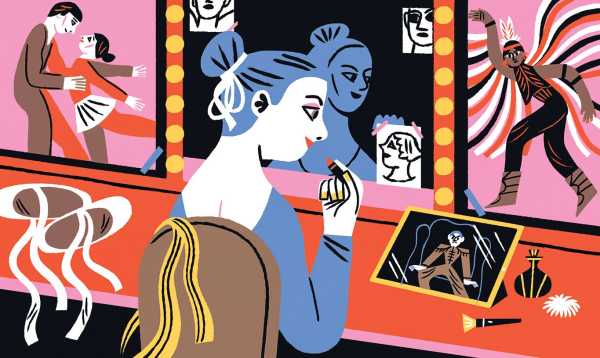
Paris Opéra Ballet, “The Emperor Jones”
Every year, the dance scene awakens with a jolt in mid-September. The starting bell, as usual, is the Fall for Dance festival (Sept. 16-27), a smorgasbord of works from around the world organized by New York City Center. This year, audiences can catch a collaboration between Sara Mearns (a leading dancer at New York City Ballet for almost two decades) and Jamar Roberts (formerly of Alvin Ailey) alongside a tap solo by the winning Dario Natarelli, choreographed with Michelle Dorrance; or the Paris Opéra stars Hannah O’Neill and Hugo Marchand, in Jerome Robbins’s dreamy “Afternoon of a Faun.” City Center also hosts a rare visit by the Paris Opéra Ballet (Oct. 9-12), albeit in atypical repertory—an earthy dance by Hofesh Shechter, “Red Carpet.” This is followed by an equally rare visit from the Dutch National Ballet (Nov. 20-22), bringing works by the éminence grise of Dutch ballet, Hans van Manen, plus a new trio by Alexei Ratmansky, “Trio Kagel.”
The vibrant ensemble Indigenous Enterprise, a collective of Native American dancers and musicians based in Phoenix, floods the Joyce with jubilant dancing and dramatically colored regalia in “Still Here” (Sept. 16-21). The company’s deft choreography of solos and ensemble passages allows the performers, each representing a different tribal tradition (Navajo, Cree, Pueblo, Seneca, and Lakota), to stand as both distinct and part of a harmonious whole. A few weeks later (Oct. 14-19), the Limón Dance Company, founded in 1946 by José Limón, a father of American modern dance, offers a reconstruction of his eerily resonant “The Emperor Jones.” The dance, not seen in years, is loosely based on the play by Eugene O’Neill, about an arrogant despot undone by his demons.
Jamar Roberts, whose dances combine jaggedness with quicksilver complexity, débuts his third work for New York City Ballet (David H. Koch; Sept. 16-Oct. 12), set to music by the Venezuelan performance artist Arca. Justin Peck’s “Heatscape”—a dance driven by youthful energy and set against a backdrop by Shepard Fairey—also has its N.Y.C.B. première, and lovers of Balanchine will get the chance to see an extremely rare revival of the delicate and stylish “Ballade,” set to music by Fauré.
Misty Copeland bids farewell to American Ballet Theatre (David H. Koch; Oct. 15-Nov. 1), in an evening (Oct. 22) that includes some of her greatest hits. The company also rolls out a series of mixed programs, including one dedicated to the works of Twyla Tharp, whose first ballet for A.B.T., “Push Comes to Shove,” returns in full after an absence of nearly three decades. It’s vintage Tharp, combining the off-kilter with the virtuosic, and often poking fun at ballet’s self-serious tendencies.—Marina Harss
Art
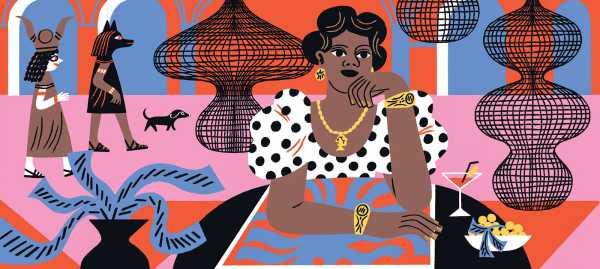
Ruth Asawa, the Met’s Egypt
Arguably, the biggest art-world happenings this fall are not exhibitions but museums themselves. Both the Studio Museum in Harlem and the New Museum began as small, scrappy projects roughly half a century ago and evolved to become collecting institutions with permanent homes. Both now reopen after high-profile—and high-price-tag—renovations that double their exhibition space. The Studio Museum returns, on Nov. 15, with installations devoted to its collection and history, plus a show of electric-light works by Tom Lloyd, who was the subject of the museum’s first-ever exhibition, in 1968. The New Museum, mysteriously, still hasn’t announced a reopening date, but will launch with “New Humans: Memories of the Future,” a building-wide show about the relationship between people and technology.
Elsewhere, heavy-hitting retrospectives abound. MOMA’s “Ruth Asawa: A Retrospective” (Oct. 19) features some three hundred works by the late Japanese American artist, who’s best known for hanging sculptures of rough wire transformed into bulbous, organic-looking forms, but who also made drawings, prints, and sculptures and was an educator and advocate. MOMA follows with “Wifredo Lam: When I Don’t Sleep, I Dream” (Nov. 10), a look at the twentieth-century Cuban artist, who travelled extensively between the Caribbean and Europe, and who filled his canvases with surreal, hybrid figures, calling his painting “an act of decolonization.”
At the Brooklyn Museum, “Seydou Keïta: A Tactile Lens” (Oct. 10) spotlights the photographer, whose portraits of everyday people in the Malian capital, Bamako, from the nineteen-forties through the sixties both captured and helped create a modern national identity. Keïta shot most of his subjects in black-and-white in his courtyard, posing them to bring out their confidence and style. Clocking in at almost two hundred and seventy-five objects, this show will be its own blockbuster, and when you’re done you can go see another: “Monet and Venice” (Oct. 11), which gathers and contextualizes the Impressionist master’s sparing depictions of the city.
The Metropolitan Museum of Art’s “Witnessing Humanity: The Art of John Wilson” (Sept. 20) includes the breadth of the artist’s emotionally charged, figurative work about Black American experience, from prints condemning racism to affirming portrait paintings; the show extends the legacy of the under-known Wilson beyond his home town of Boston. Also at the Met is a revelation of a different kind: “Divine Egypt” (Oct. 12), which examines and taxonomizes the images of twenty-five deities in ancient Egypt. This is the type of show the Met does best: scholarly and sumptuous.
Meanwhile, a list of this season’s smaller single-artist surveys reads like a feminist corrective: among them are June Leaf at Grey Art Museum (Sept. 9), Coco Fusco at El Museo del Barrio (Sept. 18), Vaginal Davis at MOMA PS1 (Oct. 9), Graciela Iturbide at the International Center of Photography (Oct. 16), and Gabriele Münter at the Guggenheim (Nov. 7). But perhaps the biggest effort on this front is “Designing Motherhood: Things That Make and Break Our Births” (Oct. 4), at the Museum of Arts and Design. The ambitious and sprawling exhibition, in the works for years, uses medical objects, educational films, and contemporary art to consider how design has shaped reproduction—something that seems evident but has heretofore been rarely explored.
The Whitney Museum is also attempting to rewrite history, in a way, with “Sixties Surreal” (Sept. 24). When chronicling the decade, art institutions have typically foregrounded Minimalism and Conceptualism, with their pared-down aesthetics and subtle politics. “Sixties Surreal” looks, instead, at weird, brash, psychological, and sexual works made in those years by more than a hundred artists, to offer what will undoubtedly be a germane alternative.—Jillian Steinhauer
The Theatre

American Excess; Dude, Where’s Godot
This fall, seriousness strikes the giddy Broadway theatre like a cold snap. James Graham’s drama “Punch” deals with the aftermath of a killing blow (Friedman; beginning previews Sept. 9); Keanu Reeves and Alex Winters wax nihilistic in Samuel Beckett’s “Waiting for Godot” (Hudson; Sept. 13); Laurie Metcalf stars in Samuel Hunter’s melancholy “Little Bear Ridge Road” (Booth; Oct. 7); Bess Wohl’s “Liberation” examines seventies feminism (James Earl Jones; Oct. 8); and Mark Strong and Leslie Manville play doomed spouses in Robert Icke’s “Oedipus” (Studio 54; Oct. 30). Even the lightest fare—Yasmina Reza’s “Art,” with Neil Patrick Harris, Bobby Cannavale, and James Corden (Music Box; Aug. 28)—stages arguments about the ineffable.
The fall’s Broadway musicals are also a surprisingly unfrivolous lot, pondering the state of our union: “Ragtime,” Stephen Flaherty, Lynn Ahrens, and Terrence McNally’s nineteen-nineties barn burner, charts the U.S.’s troubled racial history (Vivian Beaumont; Sept. 26); Stephen Schwartz and Lindsey Ferrentino adapt the 2012 documentary “The Queen of Versailles,” about an avatar of American excess, with Kristin Chenoweth in the throne (St. James; Oct. 8); and even the bombastic eighties megamusical “Chess” (Imperial; Oct. 15), by Benny Andersson, Björn Ulvaeus, and Tim Rice, returns with new thoughts about the U.S.-Soviet relationship. As counterprogramming to all this political relevance, the goofball “Beetlejuice” (Palace; Oct. 8) boomerangs back to Broadway.
Speaking of musicals on a tight orbit: Andrew Lloyd Webber’s just-closed “The Phantom of the Opera” is reborn as the immersive “Masquerade” (218 W. 57th St.; through Oct. 19); William Finn and Rachel Sheinkin’s “The 25th Annual Putnam County Spelling Bee” takes another turn (New World Stages; Nov. 7); and Laurence O’Keefe’s 1997 “Bat Boy: The Musical” reëmerges from its cave at Encores! (City Center; Oct. 29-Nov. 9). Heather Christian’s superb, gospel-folk “Oratorio for Living Things,” happily, is also back, along with its peaceful, much needed cathedral atmosphere (Signature; Sept. 30).
Screen stars abound Off Broadway: the Shed hosts both André Holland in Tarell Alvin McCraney’s “The Brothers Size” (Aug. 30) and Tom Hanks in his time-travelling romance, “This World of Tomorrow” (Oct. 30); the “Los Espookys” genius Julio Torres rolls out his synesthetic standup in “Color Theories” (Performance Space New York; Sept. 3-21); Elizabeth Marvel headlines “And Then We Were No More,” by Tim Blake Nelson (La Mama; Sept. 19); Martyna Majok’s “Queens” (Manhattan Theatre Club at City Center; Oct. 14) features Anna Chlumsky; and Stephen Rea performs Beckett’s “Krapp’s Last Tape” (N.Y.U. Skirball; Oct. 8-19). (There are precious few classics this season: also Off Broadway is Ibsen’s “The Wild Duck,” at Theatre for a New Audience, beginning Sept. 2.)
Several of our finest playwrights have new work onstage: James Ijames, Damon Cardasis, and Sia adapt Cardasis’s queer coming-of-age film, “Saturday Church,” into a musical (N.Y.T.W.; Aug. 27); Jordan E. Cooper’s “Oh Happy Day!” sets a Biblical flood at a family barbecue (Public; Oct. 2); Anne Washburn’s “The Burning Cauldron of Fiery Fire” describes an insular California community (Vineyard; fall); and Talene Monahon’s satire about Armenian identity, “Meet the Cartozians” (Signature Center; Oct. 29), stars the recent Tony Award winner Will Brill. Apocalypse and the lure of despotic leaders are, for some reason, on many minds: Nazareth Hassan’s “Practice” (Playwrights Horizons; Oct. 30) satirizes a performance collective in thrall to its guru; at Roundabout, Rajiv Joseph’s “Archduke” (Laura Pels; fall) imagines the radicals who trigger a world war; Ethan Lipton’s comic musical “The Seat of Our Pants” envisions the end times (Public; Oct. 24); and Brian Watkins’s “Weather Girl” makes bleak jokes as the world burns (St. Ann’s Warehouse; Sept. 16).—Helen Shaw
P.S. Good stuff on the internet:
- Your new word-game addiction
- David Bowie, up close
- What to do with that market haul
Sourse: newyorker.com



